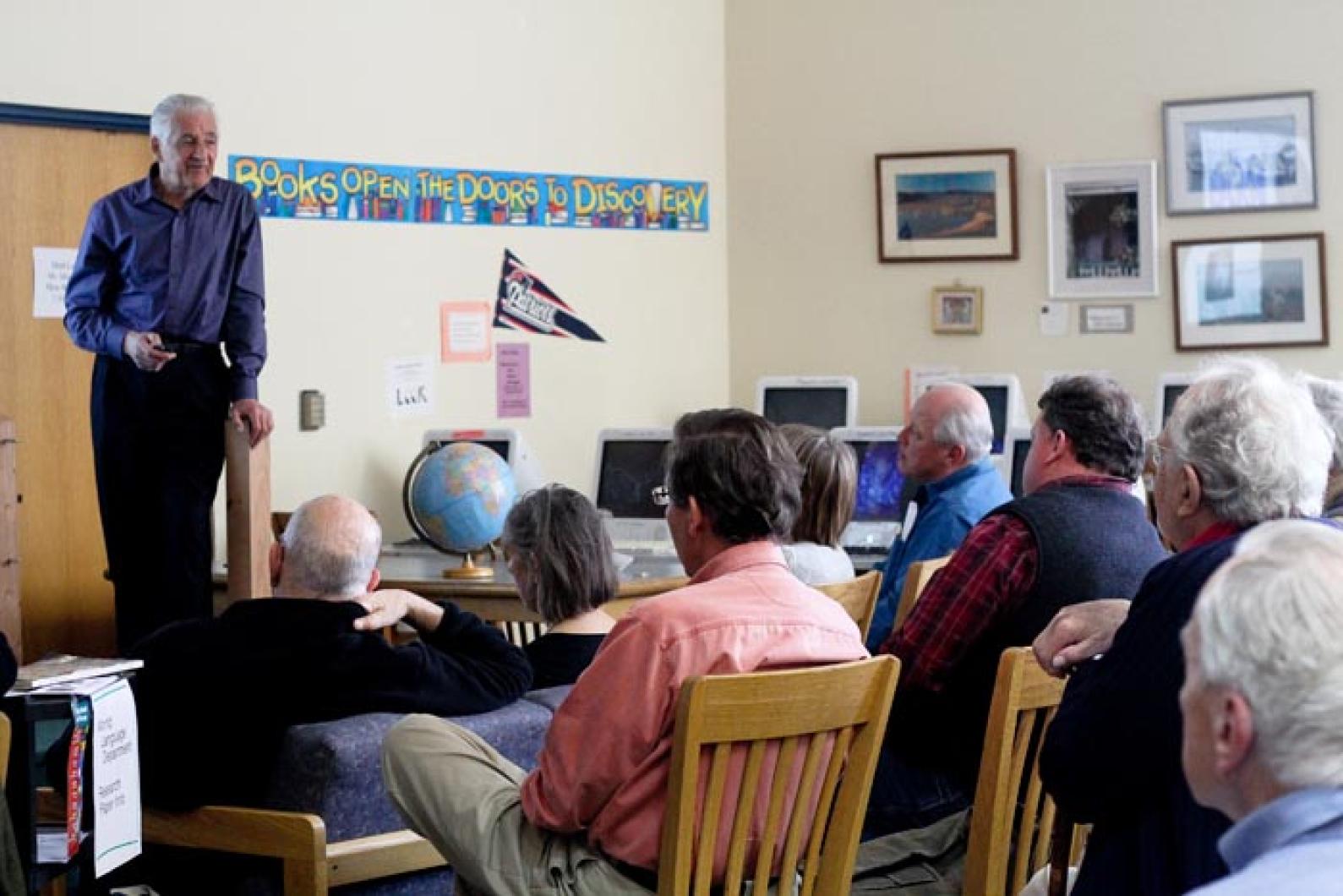The title was potentially daunting: A Lecture on Relativity and Related Topics for a General Audience.
And while the topic was well outside my bailiwick, the phrase “for a general audience” assured me I was in good company.
A group of close to 20 brave souls gathered in the library of the Martha’s Vineyard Regional High School, poised for an illuminating PowerPoint presentation given by Eric Brodheim, senior research scientist and adjunct professor of operations research at Columbia University. His accessible manner and soothing voice put the room at ease at once. He introduced five questions that he hoped, albeit doubtfully, to cover in a brief two hours:
• Why must the seemingly flat Earth have a third dimension?
• Why must the seemingly spherical universe have a fourth dimension?
• What is the scale of the universe?
• What is the universe made of?
• What is gravity?
Tackling the first question, Mr. Brodheim gave a very interesting history of the belief system in the time of the flat Earth theory. He explained how it came to be, with some amusing reasoning. He delineated the significance of what a day, month and year had come to mean as determined by the current understanding of astronomy. Where to put the center of the universe was next on the list. Why not the North Pole, went the thinking, because no one can physically get there. Also, the maps of the day would have the North Pole in the center. Mr. Brodheim explained how the flat Earth theory held water (no pun intended) even in light of Vasco da Gama’s sailing route around the world. Some discrepancies began to emerge, only to be dismissed as optical illusions. The common wisdom of the day held that if a person went to the edge of the earth and fell off, it served him right; no one should be out that far!
As for the formation of the Earth over four billion years, Mr. Brodheim described it as still expanding — Julius Caesar would be found only 10 feet under, while dinosaurs would be found 2,000 feet under. He moved on to discuss concepts such as the Virgo Super Cluster and a yellow belt of radiation, which is when I realized my brain’s inability to grasp fully the secret of the universe that he was imparting to us. Darn it.
After giving examples of a straight line across the Earth actually being a curved one, and the center of the universe being incorrectly determined, the lecturer boiled the concept of relativity down to this: Things are not what they seem, therefore they are relative. Suddenly I got it. But there was more.
Albert Einstein was an inevitable part of the discussion, which touched on his cosmology constant and the results of his professional relationship with astronomer Edwin Hubble. There was talk of galactic red shifts, gamma rays and the distinction between a particle and a wave. But the most enlightening — and entertaining — part of the lecture was when Mr. Brodheim took a crack at explaining the fourth dimension. Some understood the concept of time delay while others, myself included, were baffled. Mr. Brodheim offered words of comfort, explaining that from an evolutionary standpoint we are equipped to understand only what we need to for our survival, so we need not worry too much about the fourth dimension.
Barbara Plesser spoke for most of us when she said, “This is a great relief to me!”
In the end there was simply not enough time for a thorough explanation of gravity or a discussion of string theory. No matter, there was plenty of food for thought and a healthy discussion by attendees afterwards.
Whether the lecture truly was for a general audience may be debatable, but it without doubt made for an interesting and stimulating Saturday afternoon in early April on the Vineyard.
And thanks are due to ACE MV for its eclectic group of educational offerings — in a single-week span, you could learn about cake decorating, birding, public speaking and, of course, relativity.
For more information, contact acemv.org.




Comments
Comment policy »